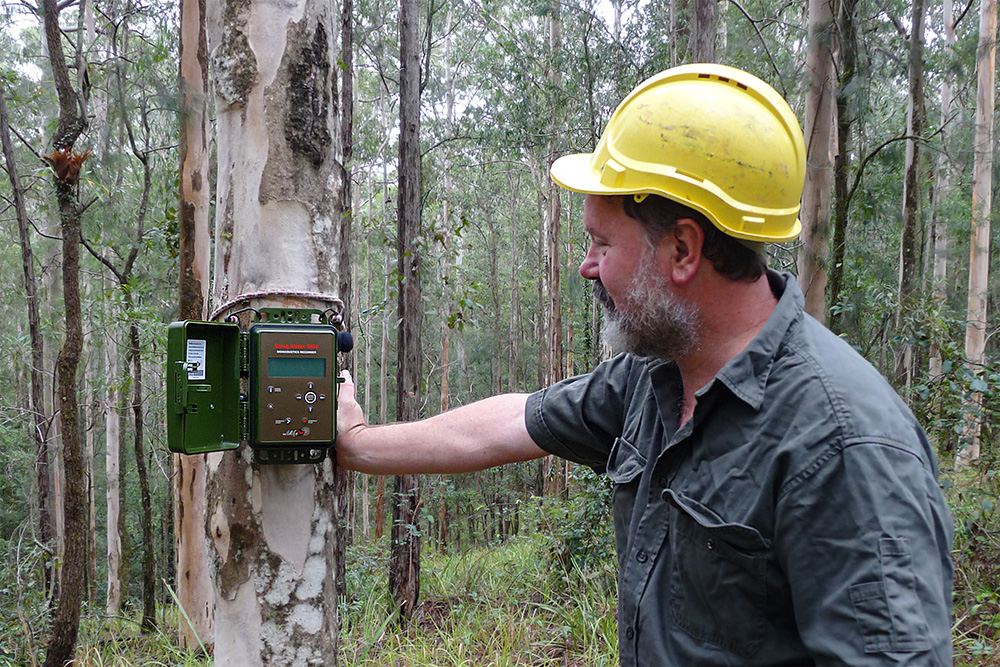
Acoustics provide new insights on koalas in hinterland forests
30 Jul 2018

A major new study that records forest sounds has found evidence for up to 10 times the rate of koala occupancy in NSW’s north-east forests than previously estimated.
The NSW Department of Primary Industries (DPI) project, which focused on the iconic marsupial’s response to timber harvesting, involved more than 14,500 hours of audio recorded over three years to measure the bellows of male koalas.
DPI Principal Research Scientist Dr Brad Law said the new technique saw SongMeter devices installed at 171 sites in the north-east, in many State forests, National Parks and reserves.
“Koalas are surprisingly difficult to detect – they are cryptic animals especially in tall forests, yet their bellows echo through the forest at night during the spring mating season, making this new survey method particularly effective,” he said.
The study region spanned more than 1.7 million hectares of mapped koala habitat – from the ranges and tablelands of north-east NSW, to the Hunter River in the south and the Queensland border in the north.
Sites were located in the public forests of the coast and ranges, but avoided previously cleared valleys and private land surrounding towns where koalas are known to be declining due to urbanisation.
Over three breeding seasons, researchers found that 65 per cent of survey sites on average were occupied by at least one male koala (in the small zone surrounding each SongMeter).
“We found that occupancy was influenced by elevation, cover of important browse trees, site productivity and extent of wildfire in the last 10 years,” Dr Law said.
“Interestingly, past timber harvesting did not influence koala occupancy. There was no difference in results between heavily harvested, lightly harvested and old growth sites.
“Time since harvesting and the amount of harvesting in the local area did not influence occupancy. There was also no difference between National Park and State forest sites.”
Dr Law said for many years, specific environmental protections have been in place in State forests, and the results of this project are an important step in assessing the effectiveness of past forestry management practices.
“Our results also support proposed improvements like broader protection triggered by mapping koala habitat,” he said.
“It highlights the importance of retained habitat and food tree retention applied during harvesting for koalas and other wildlife, both in the short-term and decades after harvesting – as we observed.
“Given the large extent of suitable habitat in the hinterland forests of the north-east, the results show koalas are more widespread than previously understood, both in existing National Parks and State forests.
“This is really unexpected good news, but it doesn’t detract from the need to continue to focus our efforts on koala conservation, especially where they are suffering from permanent habitat loss due to factors such as urbanisation.”
In addition to current legislative reforms, the NSW Government has already taken further direct action to protect koala populations and preserve their habitat through the recently announced NSW Koala Strategy.
“There is now a rigorous baseline figure for koala occupancy in our north-east forests to continue to monitor into the future,” Dr Law added.
More information
Media contact: Laura Hutton or Phil Bevan, phone (02) 6391 3686

